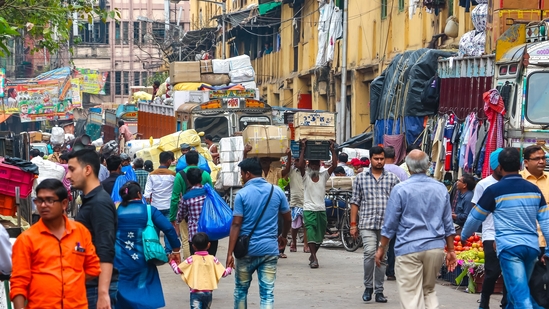Two more people died from injuries sustained during Saturday night’s stampede at the national capital’s main railway station when thousands attempted to board trains heading to Prayagraj for the Maha Kumbh festival, taking the death toll to 18, officials said.

The tragedy, which unfolded at the station’s Ajmeri Gate end, exposed critical failures in crowd management on a night when officials sold 7,600 unreserved tickets in just two hours for trains heading to Prayagraj, where the festival has been one of the top priorities of both the central and state government.
“There was surge in crowd to board the trains heading for Prayagraj for the ongoing Mahakumbh,” Indian Railways said in a statement. Most of the crowd was waiting at platform 14-15 and the foot bridge and stairs leading to it as they waited for the Prayagraj Express. “Seeing the surge in crowd for Prayagraj, a special train was announced for Prayagraj from Platform No 12. The incident took place around 9.15PM on the staircase of platforms 14 and 15,” it added.
The resulting confusion — many mistakenly believed the Prayagraj Express scheduled to depart at 10.10pm was being moved to platform 12 — proved lethal for passengers already pressed between delayed services and thousands of new arrivals holding unreserved tickets, eyewitnesses and officials who spoke to HT on condition of anonymity said.
The Railways named a two-member committee of Narsingh Deo, Northern Railway’s principal chief commercial manager (PCCM), and Pankaj Gangwar, its principal chief safety commissioner (PCSC) to investigate the stampede.
Railway minister Ashwini Vaishnaw announced a compensation of ₹10 lakh for families of the deceased, ₹2.5 lakh for those seriously injured, and ₹1 lakh for minor injuries. Officials confirmed that families of all 18 victims received immediate payments following autopsies, with bodies transported home in provided ambulances.
Of 15 injured passengers, 11 were discharged from hospital, while three remained in serious condition.
For 30 to 45 minutes, porters at the station carried injured passengers to ambulances while emergency services were still arriving. “Never had I imagined that I would be carrying lifeless bodies on my shoulder,” said Vikas Yogi, 22, a porter who became one of the first responders.
“Police and others came after 10pm and by then, most people, who had collapsed, had died,” said Manoj Sah, who lost three members of his family (in-laws and daughter). At Lok Nayak Hospital, where 15 deaths were confirmed, doctors reported a surge of casualties arriving through the night.
By Sunday, families carrying passport-sized photographs were still searching police stations and hospitals for missing relatives. Hospital officials confirmed that several victims died of traumatic asphyxia, crushed in a surge of humanity that witnesses say began building from 6pm.
Among the dead was Silam Devi, 50, who had hoped to seek blessings for her newly married daughter at the Kumbh. “Scores of people walked over him and his mother,” said her sister Meena Devi, describing how her nephew survived while his mother perished. “We all just wanted to see the Kumbh since we all have never been there.”
Several people who were at the station said they saw too few security personnel deployed.
For some families, the compensation offers little consolation. Gupteshwar Yadav from Ballia in Uttar Pradesh spent Sunday searching hospitals with his brother after losing his wife in the chaos. “The crowd was such that we got separated,” he said, clutching her photograph. “After the crowd dispersed somewhat, my brother and I have been searching but have not found any information about her.”
The Delhi Police’s railways unit has initiated an inquest proceeding, though no first information report had been registered by late Sunday. Officials said a case would only be registered if conspiracy or deliberate criminal negligence emerged during investigations.
A police official, who asked not to be named, said 1,500 unreserved tickets — these are valid for three hours from when purchased — were sold between 6pm and 8pm. A Railways official separately told HT, asking not to be named, that 7,600 such tickets were issued on Saturday evening, against a usual of around 5,000.
The Railways’ response has focused on immediate measures: additional security personnel, special trains for devotees heading towards Prayagraj, and a high-level inquiry. The originally delayed trains that had contributed to the initial crowding finally left between midnight and 3am on Sunday.
Experts, however, point to more fundamental issues. A retired Northern Railways general manager, speaking on condition of anonymity, called it “a completely avoidable incident and a classic example of mismanagement,” criticising authorities for failing to restrict unreserved passengers or create designated waiting areas.
“The disaster cell of the safety department seems to be inactive,” said another former railway official, speaking on condition of anonymity. “The stampede would not have occurred if crowd assessment was done. When the authorities knew there were many more passengers than expected, they should have deployed adequate manpower to manage the crowd.”
The Railways, experts pointed out, did not announce a helpline number as is usually the practice in the event of mass casualty events.
“Local police are also responsible for crowd control,” the retired general manager noted. “Even when they issued excessive unreserved tickets, both the railway officials as well as the Delhi police officials should have been placed at various platforms to keep a close watch on the crowd, which clearly was not done.”
President Droupadi Murmu and Prime Minister Narendra Modi expressed condolences, with Modi saying he was “distressed” by the incident. Opposition leader Rahul Gandhi called it another example of “failure of the Railways” and “insensitivity of the government,” questioning why better arrangements weren’t made for the expected surge of devotees.
The incident stands as the deadliest at an Indian railway station since the Elphinstone Road tragedy of 2017, when 23 people died in Mumbai. As normal service resumed Sunday, scattered belongings still littered the stairs and platforms – grim remnants of a night when the railway system fatally collided with a rush that officials failed to foresee.

